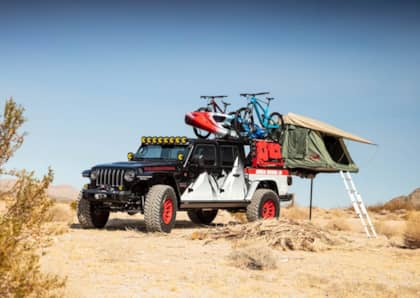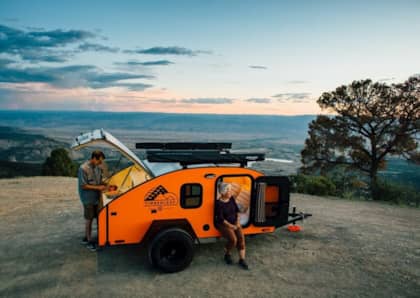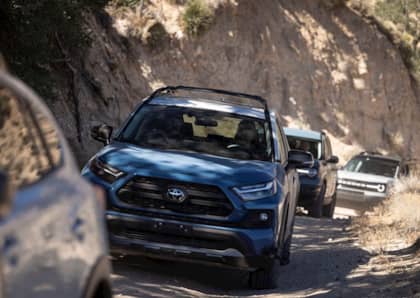3 Types of Roof-Rack Awnings Reviewed: Complete Your Off-Road Overlanding Rig
The clouds overhead were a deep blue hue and rolling toward the race course in dark, billowing wisps, but they seemed distant enough, so I stayed on the course so as to not miss out on the action. I stood on the outside of turn two at the Gingerman Raceway to photograph the time-attack competition at the Gridlife Motorsports Festival, and I was pressing my luck. Before I knew it, wind abruptly pushed at my back. When I turned around the storm was directly behind me. “Run, move, move, move!” The words escaped my throat in a panic as I shoved my full-frame camera and 70-200 lens under my shirt, hiked up my camera bag and ran for my photography equipment’s life. Those who know me also know that if you see me running, you’d better start running, too.
I arrived at the camper, exhausted and fumbling to find my keys. The downpour struck just as I ducked under my roof rack awning. Now, I may be biased about awnings because one saved me thousands of dollars’ worth of camera gear destruction, but it also took some trial and error to arrive at my (hopefully) final setup. It took several years, some headaches and multiple setups to find the right one for me.
Filtering Out the Options
With the overlanding craze in full-swing, there are countless options in awnings. Look for a brand known for storm-resistant UV and waterproof fabric. Also remember it’s not just what is in the inside that counts: A quality storage bag with only the most heavy-duty of zippers and holding straps will save you some struggle during set up and pack up.
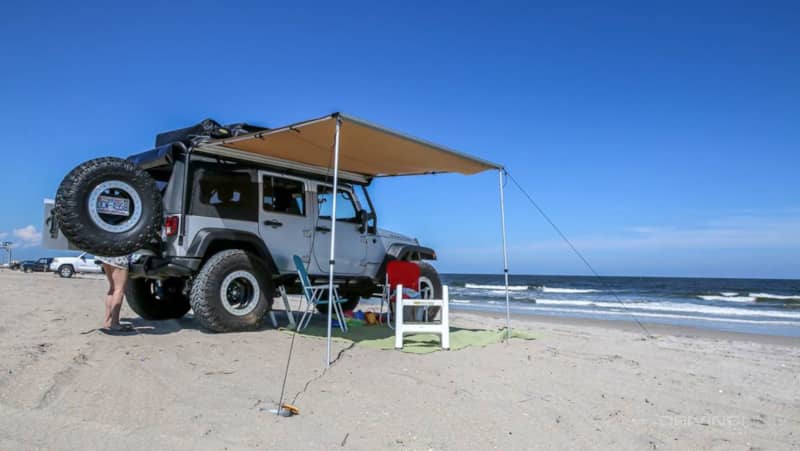
Don’t be like me, the person who thinks the size “sounds right” and makes the purchase only to yearn for more (or less). Measure the height, width and length of your vehicle carefully. I would even suggest sketching a diagram of your setup, then the space around it that you’d like under a canopy. Walk around your vehicle and measure the length and width of your desired awning area. Note that the peak height listed on an awning or canopy may not be the effective height of the product. In some cases, the shape of the product means that the roof peak is highest at one specific point, and lower everywhere else.
Starting Small
Awnings can run from just over $100 on up to $3,000 and beyond depending on how many overland gearhead points you desire. Single-panel awnings are great for a day trip to the beach or shelter from the rain. The lower price point is an excellent entryway into the world of awnings for those who just aren’t quite sure.
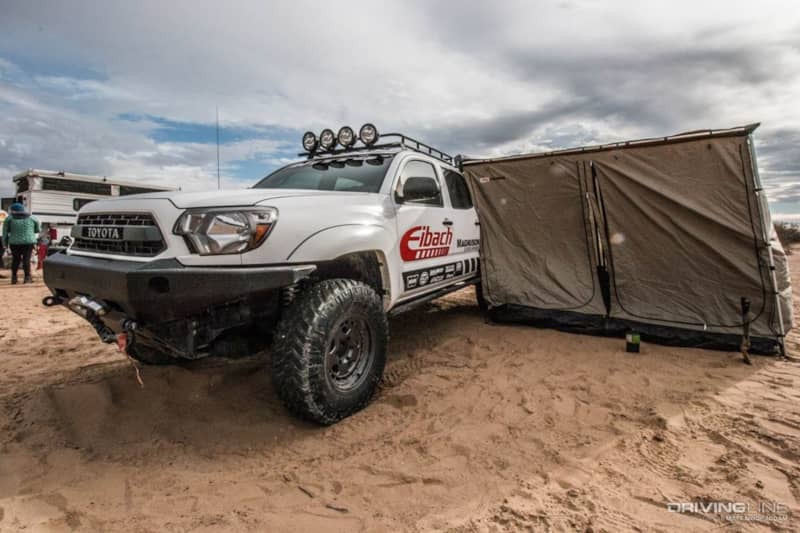
ARB’s awnings double as a private living or sleeping area if you purchase the optional walls and canvas floor, but living in Northern Michigan, I most appreciated the mosquito netting that kept the area’s desperate blood-sucking monsters at bay. I had the single-panel awning at the same time I was rolling with my Jeep and rooftop tent and it was the perfect solution for the limited space I had available on my roof rack. I chose the brand for the UV and waterproof material, bag and zipper quality, ease of setup and cost.
Although I selected the largest size available, I quickly realized that the single panel didn’t offer enough coverage when the mid-day sun was overhead. Using it in rain with the slightest wind was pointless unless I hung the walls for a full room, which mostly blocked the beautiful view. (I’m also really good at coming up with “logical” excuses to upgrade my car projects and camping gear.)
Moving on Up
I determined I needed a little more shelter for my longer overlanding adventures, so it was back to the interwebs for obsessive product researching. I knew I wanted (needed?) at least a 180-degree awning, but the 270-degree coverage was undoubtedly appealing. While the 180 does provide less square footage and lower profile, they are also lighter, easier on the wallet, and in many cases, simpler to set up and break down than their larger counterparts. 23Zero carries a high-quality 180-degree awning with an easy-up free-standing option, but I didn’t own it long enough to rave about its longevity first-hand.
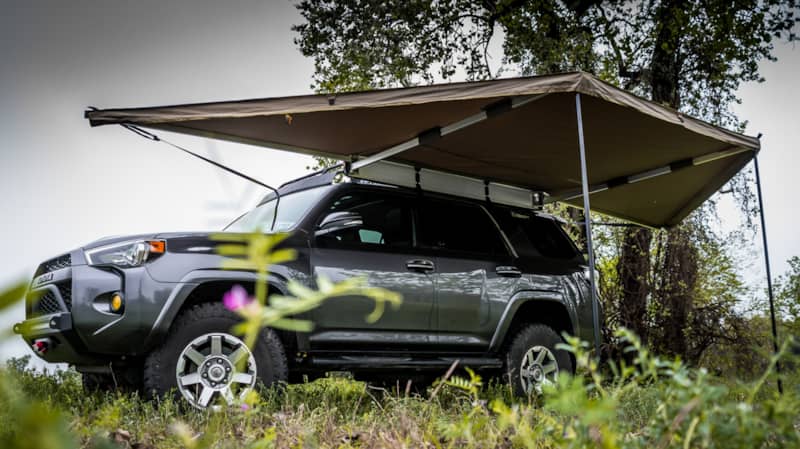
Remember how I said I have a knack for thinking of excuses to upgrade my vehicles? Well, I ended up selling my Jeep for more than expected, then jumped into a Toyota Tacoma and set it up with an Overland Expedition camper trailer. Enter the next awning upgrade. I dove head-first into the lower price bracket of 270-degree awnings. I wanted something that would span over the trailer’s cooking area and still provide space for seating under the shelter, however, my first attempt at living the 270-degree life didn’t quite measure up.
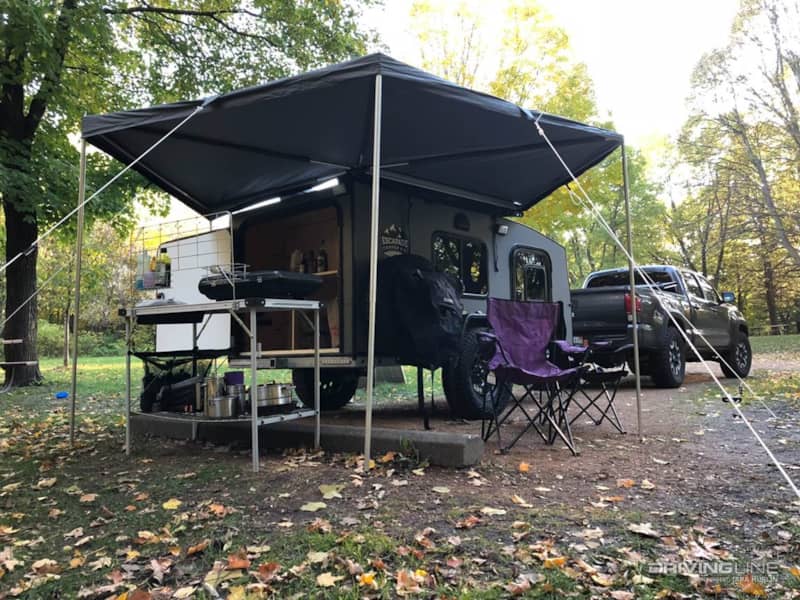
Overland Pro’s Wraptor was the first 270-degree awning I purchased. It braved two years and four angry thunderstorms with me and still stood strong, but stretching the canvas corners around each pole during every setup became the number one task I dreaded when setting up camp. Perhaps the too-tight fitment was just a one-off flaw, but it was literally a pain. It left my fingers raw and often required two people to secure it. And, stupid me, I didn’t measure my space beforehand and the canvas wasn’t as wide as I had pictured. It barely expanded over the cooking area and it stopped right before the side door into the trailer. All legit excuses, right? It was time to pony up and buy the awning I really wanted in prior years—a freestanding set up. That’s right: poles not required. My moments of tripping over tiedowns in the midst of urgent early-morning nature calls would be over, unless it’s an exceptionally windy night.
I sold the Wraptor and saved up for Overland Vehicle Systems’ Nomadic 270 passenger-side setup. At 129 square feet of freestanding covered shelter, it was the largest awning I could find for just under $900. Just under a year into the purchase, I am not disappointed. No matter where the blistering hot sun is, I can hide from it without backing myself into a corner against the trailer. When the sky breaks open to rain, the adjustable poles easily detach from the aluminum frame and fold down. Tie-down points are well thought out and encourage water run-off when staked tightly to the ground. I camped beside Lake Superior for one night in high-winds (with poles and tie-downs activated), and it withstood the abuse without any damage or stretching of the fabric. It even withstood a snow storm.
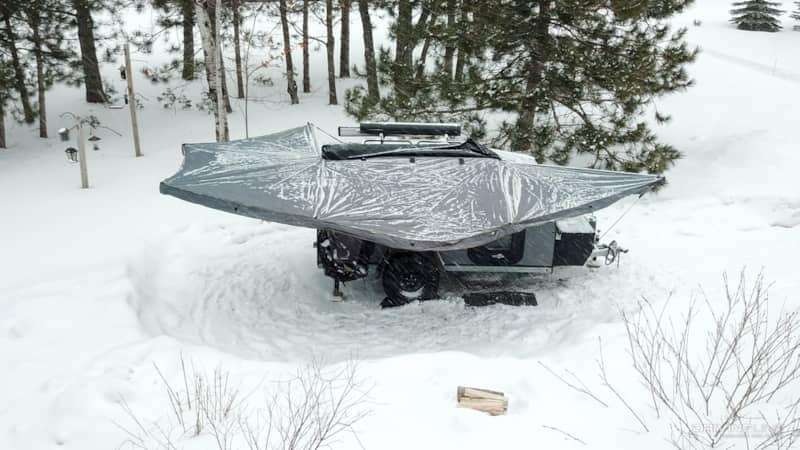
Most importantly, setup is as simple as unzipping the bag, releasing the Velcro straps and swinging the structure opened and securing at each end. Rolling it up and packing it away is almost just as easy, especially once you remember which side to pivot inward first. Don’t worry: It comes with instructions to remind you if you’re forgetful like me.
Final Words
The moral of the story? Measure twice and purchase once, unless you are looking for excuses to try out multiple awnings. Get the widest awning you can fit and afford, and if there’s a special feature that you just must have, like the free-standing system, wall kits or mosquito netting, it’s worth saving for.
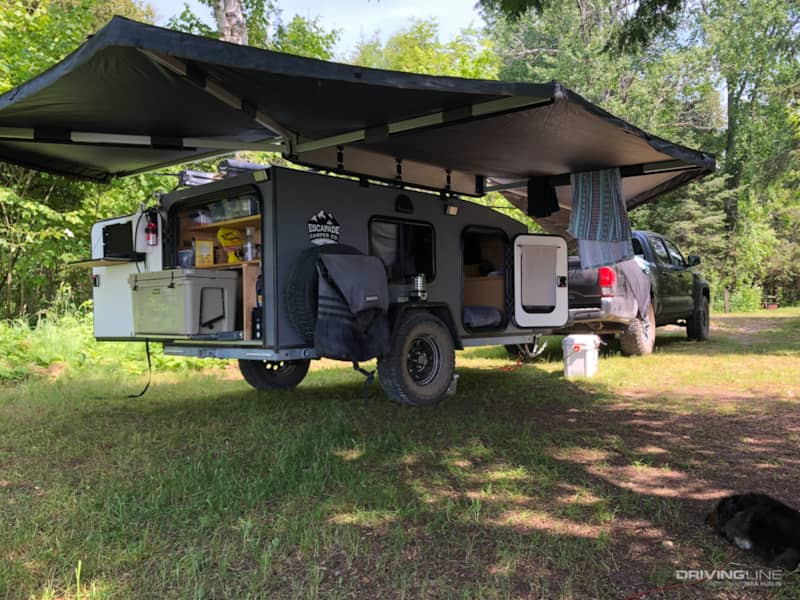
Now that you've gotten your awning fix, lets move on to ten more must-haves for expedition gear junkies – that's you!




